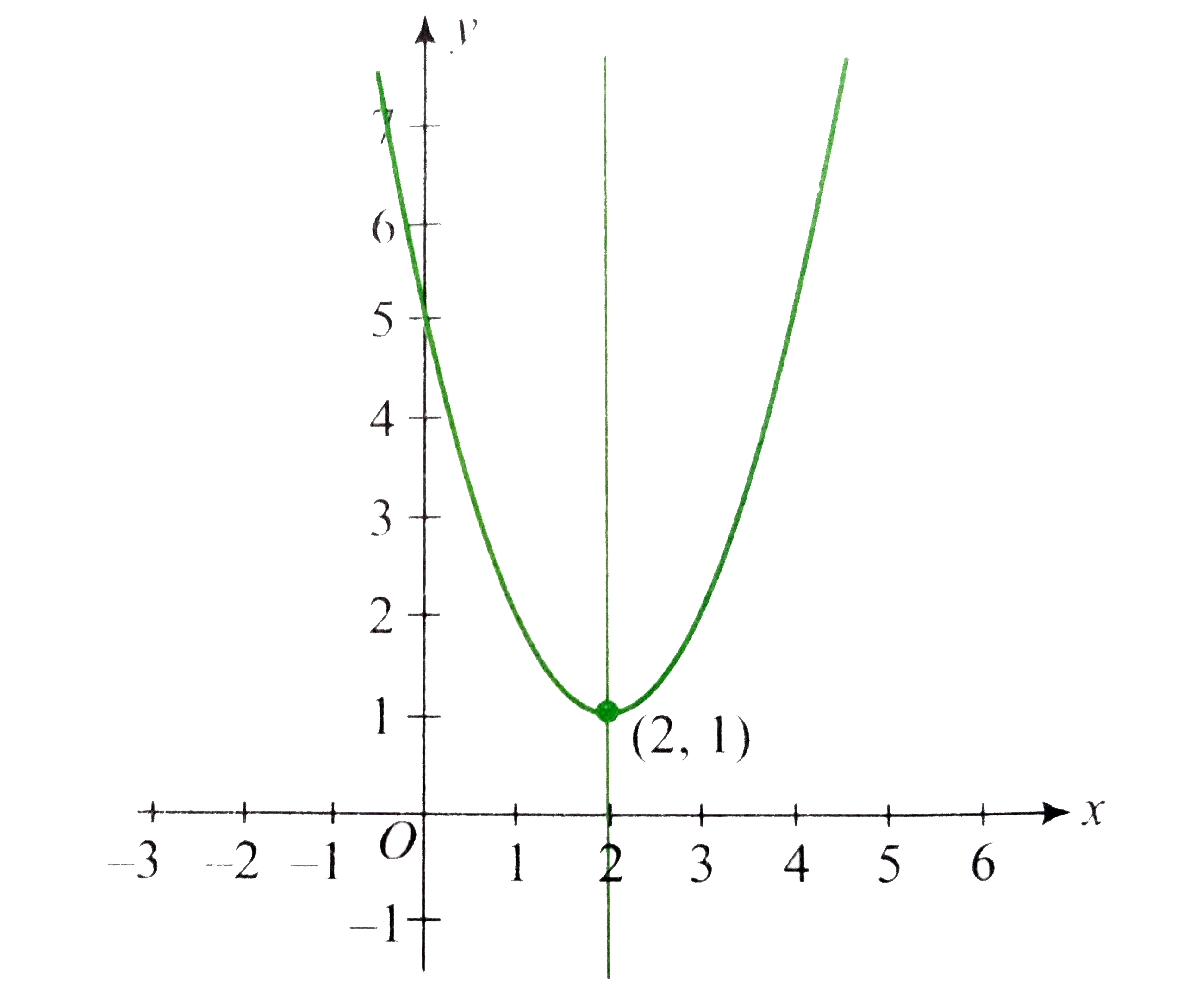Let f:R→[1,∞),f(x)=x2−4x+5. Then find the largest possible intervals for which f−1(x) is defined and find corresponding f−1(x).Solution in Tamil
We have f:R→[1,∞),f(x)=x2−4x+5
or f(x)=(x−2)2+1.
Graph of the function is as shown in the following figure.

Clearly f(x) is many-one function.
However, in the interval (−∞,2]or[2,∞),f(x) is one-one.
For f:(−∞,2]→[1,∞),y=(x−2)2+1
∴(x−2)2=y−1
⇒x−2=√y−1
⇒x=2−√y−1
Thus f−1:[1,∞)→(−∞,2],f−1(x)=2−√x−1
For f:[2,∞)→[1,∞),y=(x−2)2+1
⇒x=2+√y−1
Thus f−1:[1,∞)→[2,∞),f−1(x)=√x−1+2
Topper's Solved these Questions
- RELATIONS AND FUNCTIONSBOOK - CENGAGECHAPTER - RELATIONS AND FUNCTIONSEXERCISE - Exercise 1.1
15 Videos
- RELATIONS AND FUNCTIONSBOOK - CENGAGECHAPTER - RELATIONS AND FUNCTIONSEXERCISE - Exercise 1.2
5 Videos
- RELATIONS AND FUNCTIONSBOOK - CENGAGECHAPTER - RELATIONS AND FUNCTIONSEXERCISE - JEE Previous Year
12 Videos
- Quadratic Equations, Inequalities, Modulus and LogarithmsBOOK - CENGAGECHAPTER - Quadratic Equations, Inequalities, Modulus and LogarithmsEXERCISE - Question Bank
28 Videos
- SCALER TRIPLE PRODUCTS BOOK - CENGAGECHAPTER - SCALER TRIPLE PRODUCTS EXERCISE - DPP 2.3
11 Videos
Similar Questions
If sets A=[−4,1]andB=[0,3), then find the following sets:
(a) A∩B (b) A∪B (c ) A−B
(d) B−A (e ) (A∪B)' (f) (A∩B)'
View Solution(a) If n(A)=6 and n(A×B)=42 then find n(B)
(b) If some of the elements of A×B are (x,p),(p,q),(r,s). Then find the minimum value of n(A×B).
View SolutionFor real x, let f(x)=x3+5x+1 , then (1) f is oneone but not onto R (2) f is onto R but not oneone (3) f is oneone and onto R (4) f is neither oneone nor onto R
View SolutionLet a,b,c,d be positive integers such that (log)ab=32and(log)cd=54. If (a−c)=9, then find the value of (b−d).
View SolutionNumber of integral value(s) of λ for which vectors x2ˆi−ˆj+xˆk,(λ−1)ˆi−2λˆj+ˆk and ˆi−ˆj+ˆk, in the order from right-handed system ∀x ∈R, is
View SolutionLet f:(-oo,-1)rarr R-{1} is defined as f(x)=(x)/(x+1) Find f^(-1)(x)
View SolutionIf f:R rarr R be defined by f(x)=x^(2)+1 then find f^(-1)(17) and f^(-1)(-3)
View SolutionLet f:(-oo,1]rarr(-oo,1] such that f(x)=x(2-x). Then find f^(-1)(x)
View SolutionLet the function f(x) defined on f:R−(−1,1)→A and f(x)=x21−x2 Find A such that f(x) is subjective.
View SolutionLet f:R→[1,∞),f(x)=x2−4x+5. Then find the largest possible intervals for which f−1(x) is defined and find corresponding f−1(x).
View SolutionLet f:(−∞,2]→(−∞,4] be a function defined by f(x)=4x−x2. Then, f−1(x) is
View SolutionIf f:[1,∞)→[1,∞) is defined by f(x)=2x(x−1) then find f−1(x).
View Solutionयदि f:[1,∞)→[2,∞) इस प्रकार परिभाषित है कि f(x)=x+1x तो f−1 का मान ज्ञात कीजिए।
View SolutionIf f:[1,∞)→[2,∞) is defined by f(x)=x+1x, find f−1(x)
View Solutionf:[1,∞)→[1,∞),f(x)=2x^(x−1) గా నిర్వచిస్తే f−1x కనుక్కోండి.
View SolutionLet f:R→[1,∞) be defined as f(x)=log10(√3x2−4x+k+1+10) If f(x) is surjective then k =
View Solution
